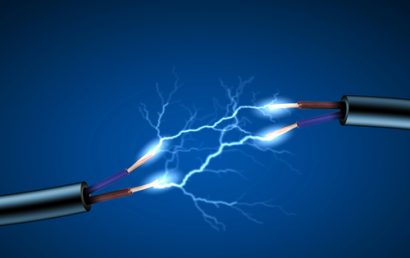Breaking Down The Science Of Electrical Conductivity
Electrical conductivity is fine when it comes to electrical wires and other given situations, but not so much where various other parts or products are concerned. Whether or not electrical conductivity is desired depends on the circumstances in which parts, products, or components are being used.
What is Electrical Conductivity?
Very simply put, the ability of a current of electricity to flow through any given material is electrical conductivity. It involves electrons flowing through the material. Because electrons can easily pass through them, water and some metals have an electrical conductivity rate that is classified as high.
Electric conductivity is determined by the composition or molecular structure of a compound. Greater conductivity is possible with a higher concentration of ions.
Discouraging and Encouraging Electrical Conductivity
Different affects are used to either discourage or encourage electrical conductivity.
- Insulative – Limits or prevents the flow of electricity.
- Conductive – Encourages the conductivity of electricity.
- Dissipative – Conducts electricity but more slowly than conductive.
- Antistatic – Lessens static electric charges as on polishes, waxes, textiles, etc.
Is There A Nonconducting Metal?
Technically, no, there is no metal that does not conduct electricity to some extent. However, certain metals conduct electricity less than others. Here is a breakdown of conducting capability from most conductive to least conductive.
Most conductive:
- Gold (pure)
- Copper (pure)
- Silver (pure)
Worst conductors:
- Pure lead
- Carbonized steel
- Stainless steel
Electric Conductivity Can Be Undesirable
When electrical conductivity is not a desired characteristic, electrical insulation may be used. The proper thermal spray coating in this situation would consist of a material that acts as an insulator – thereby discouraging electrical conductivity. The high level of electrical resistance offered by the thermal spray coating is completely different than a conductor. Conductors react differently to electric conductivity because they offer lower resistance than the insulating thermal spray coating. EIS, or electrical insulation system, may be a term that is applied to the system of applying a unique mix of materials that composes a non-conducting, electrical insulating thermal spray coating.
Electrical Insulation Materials
There are specific materials used in the thermal spray process when electrical insulation coatings are required. These can include some of the following:
- Zirconium oxide – Efficient coatings for bearing seats, rolling contact bearing shells, heat sinks, casings, circuit boards, and corona roles use aluminum oxide which is applied through plasma spraying or HVOF.
- Aluminum oxide – Used for the creation of thermal barrier coatings turbine blades, engine components, burner parts, casting molds, and thermal apparatuses, aluminum oxide is applied through plasma spraying.
Electrical Insulation Applications for Thermal Spray Coatings
When it comes to electrical insulating coatings, some of the most common applications are as follows:
- High voltage system corona suppressors
- Semi-conductor type heat sinks
- Thermal spray resistance heaters
- High temperature strain gauges
- Freestanding electrical insulators such as laser waveguides
When Conductivity Is Desired
There are a variety of coating materials that can be applied to a surface that will help to achieve varying degrees of electrical conductivity. Check with a thermal spray specialist to see which coatings would work best in your situation. A & A Coatings offers thermal spray coatings that can have whatever desired effect is required on electrical conductivity. We are well-versed in modern technology and the processes used in every industry throughout the world where coating materials are utilized. Contact one of our knowledgeable, experienced representatives today to find out how thermal spray coatings can benefit your business and your bottom line.



